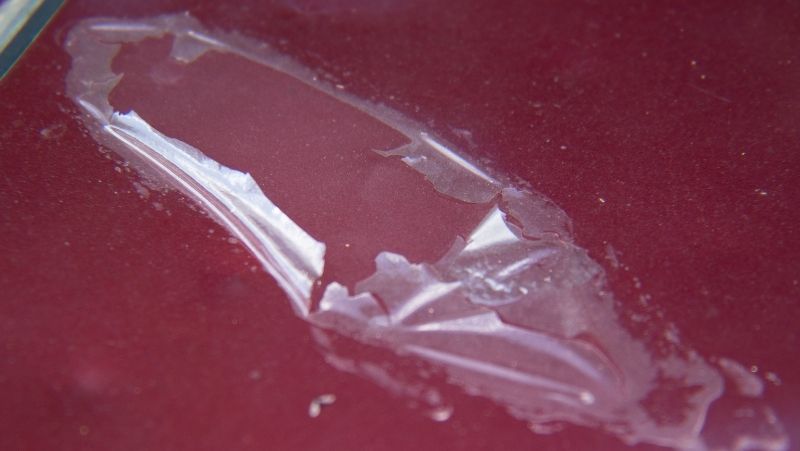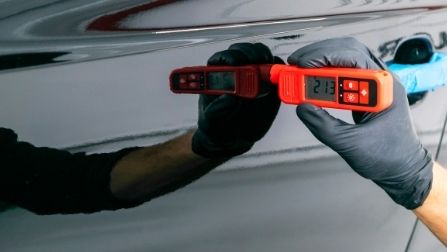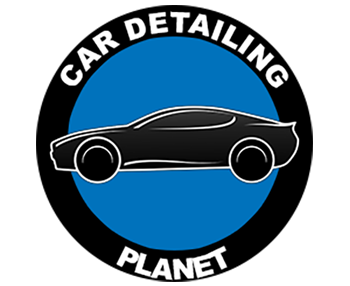Common Auto Detailing Questions About Clear Coat (Answered)
Car Detailing Planet is a part of Amazon Associates. As an Amazon Associate, we earn from qualifying purchases. Read our Affiliate Disclosure to learn more.

I realized that many people have some specific car detailing questions about the clear coat. So, I decided to write this article and answer all the questions about the clear coat that car detailers may ask.
Mostly, people ask those questions because of paint correction and paint protection. And that’s what I’m going to be focusing on.
What Is Clear Coat on a Car?
The clear coat is the top transparent layer of car paint, which is also the thickest layer. There are 1K and 2K clear coats that your car may have applied. 1K clear coats are usually applied to metal surfaces, while 2K clear coats are applied to headlights and other plastic surfaces if needed.
The primary purpose of a clear coat is to protect your vehicle’s paint from UV rays, heat, oxidation, and other various factors and potential damages.
The second purpose of a clear coat is to give your car’s paint more gloss and shine. Vehicles without a clear coat won’t be nearly as shiny as clear-coated cars.
How Thick Is Clear Coat?
The clear coat layer is usually thick between 1.5 and 2 mills. If we measure in µm, it’s usually between 38.1 and 50.8µm thick.
I am mentioning microns (µm) because, in my opinion, it’s better to measure the paint thickness using that unit since it’s a more precise measurement.
How To Know If a Car Paint Is Clear-Coated?
All new cars have a clear coat, and it’s easier to detail new vehicles and access the paint correction jobs. However, older cars (made before ’80s) don’t always have a clear coat applied to the car’s paint.
Before you do any paint correction and protection steps, you should know whether your car has or hasn’t a clear coat.
The easiest way to tell if the car has a clear coat or not is:
- Take a light polish and an applicator pad. Pour some polish on the applicator pad and start working it into the small area on the paint. If you see the color on your pad, there is no clear coat on the vehicle.
If the car doesn’t have a clear coat, we call it 1-stage paint. If there’s a clear coat, we call it 2-stage paint.
How To Know If There’s Enough Clear Coat On The Car For Safe Polishing?
It’s hard to know if there’s enough clear coat on the car for safe polishing. If there’s not enough clear coat, you could burn the paint when polishing or compounding.
Factors that affect the thickness of the clear coat:
- If the car was polished before – check my article on how many times you can polish a car
- If the car had a paint job (repainted).
- If the paint has any fillers beneath.
- The factory thickness of the clear coat.
All those factors may affect the overall thickness of the paint.

You can use a Paint Thickness Gauge (check my recommended gauges here) to measure the paint depth. That’ll help you to determine if there’s enough clear coat on the car.
You can measure the paint in mills, but I recommend measuring the color in the µm (micrometers) unit. It’s more precise than mills.
Usually, the paint is around 100-150µm thick, and the clear coat is approximately 40-50µm thick. In my opinion, if you get a reading of 80µm and above, you’re safe to polish your vehicle.
Furthermore, it also depends on the type of compound you’ll use and the amount of clear coat you plan to remove to fix all the paint defects.
How Much Of Clear Coat Is Removed When Polishing a Car?
Usually, polishing your car will remove 1-3µm of clear coat.
It’s really not much. When we take into consideration that cars will have around 40-50µm of clear coat, that means that you can polish your car about 30-40 times. On some more expensive cars, the clear coat is even harder and thicker, so you can polish them even more.
Of course, if the car’s paint has deep scratches and you plan to use extremely heavy compounds, you’ll probably remove more than 1-3µm of clear coat. So, keep that in mind.
What Types Of Clear Coat Scratches Can I Safely Remove By Polishing and Compounding?
There are three types of car scratches, and by polishing and compounding, you can only remove clear coat scratches that don’t go through the clear coat layer.
If the scratch is too deep, you’ll probably burn the clear coat to remove it, and then a repaint job will be necessary to fix all the damage made.

One rule to apply: if you can feel the scratch when you slide your nails over it, it’s probably too deep and went through the clear coat layer. So, it would be best if you didn’t polish it unless you want to remove the whole clear coat layer on that section.
So, you can safely remove only very light to medium clear coat scratches by polishing and compounding.
What If I Burn The Clear Coat While Polishing?
I don’t want this to happen to any of you, especially if you’re detailing someone else’s vehicle.
If you somehow burn through the clear coat layer, that car panel will have to be wet sanded and then repainted.
Maybe you’ll be able to hide it a little bit by using finishing polishes and by adding some glazes or sealants, but it’s only temporary. Sooner or later, that car panel will start to oxidize since nothing protects the paint from harmful UV rays.
I recommend you learn how to polish a car so you’re sure you won’t do any damage to your car’s paint.
